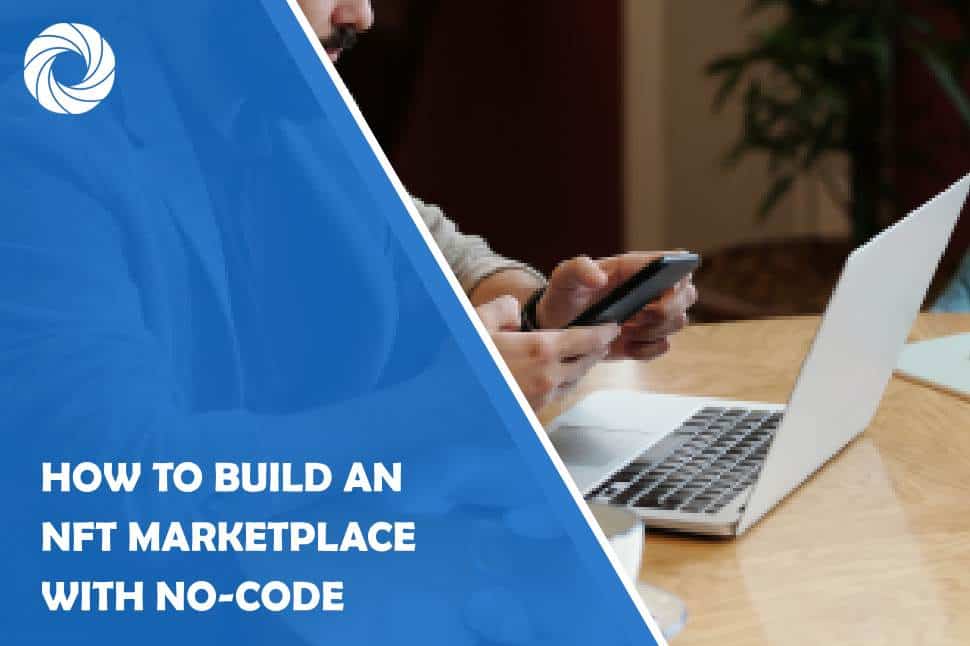Non-Fungible Tokens (NFTs) have taken the digital world by storm, revolutionizing the way we perceive and trade digital assets. If you're keen on creating your own NFT marketplace but lack coding skills, fear not. No-code platforms provide a user-friendly alternative that allows you to build a functional and secure NFT marketplace without writing a single line of code. In this article, we'll guide you through the steps of creating an NFT marketplace using a no-code platform.

1. Selecting the No-Code Platform
There are various no-code platforms available, each with its unique features and capabilities. Some popular options include Bubble, Adalo, and NoCode. Research and choose a platform that aligns with your project's requirements and user interface preferences.
2. Defining the Scope and Features
Before diving into the platform, it's essential to have a clear vision of your NFT marketplace. Determine the primary features you want to incorporate, such as user authentication, NFT minting, listing, bidding, buying, and selling. Additionally, consider features like user profiles, search functionality, and transaction history.
3. User Authentication and Authorization
Start by setting up user authentication. This allows users to create accounts, log in, and access personalized features. You can integrate third-party authentication services like Google or Apple, or implement custom login systems. Ensure robust security measures to protect user data and accounts.
4. Designing the User Interface (UI)
Using the chosen no-code platform, design the user interface of your NFT marketplace. Pay attention to user experience, ensuring that navigation is intuitive and that essential features are easily accessible. Implement responsive design principles to ensure the platform functions seamlessly across various devices.
5. Creating User Profiles
Allow users to create and manage their profiles. Include features for personal information, profile pictures, transaction history, and settings. This provides a personalized experience and fosters a sense of community within the marketplace.
6. Integrating NFT Minting and Smart Contracts
This is a pivotal step in an NFT marketplace. Utilize no-code tools to integrate NFT minting capabilities. This process involves creating unique tokens on a blockchain network. Integrate smart contracts to facilitate the ownership, transfer, and verification of NFTs within your platform.
Enable users to list their NFTs for sale or auction. Utilize no-code functionalities to create forms and interfaces for users to upload images, set prices, and define auction parameters. Implement timers, bidding logic, and payment processing systems to manage auctions effectively.
8. Managing Transactions and Payments
Incorporate payment gateways to facilitate secure transactions. Integrate popular payment providers like Stripe or PayPal, or explore blockchain-based payment methods for NFT transactions. Implement escrow services to ensure secure exchanges between buyers and sellers.
9. Search and Filter Functionality
Integrate search and filter options to help users discover NFTs based on criteria like categories, artists, price ranges, and popularity. Ensure that the search functionality is robust and provides relevant results to enhance the user experience.
10. Implementing Notifications and Communication
Allow users to receive notifications about important events, such as bids, purchases, or messages from other users. Implement real-time messaging or notification systems to keep users informed and engaged with the platform.
11. Testing and Quality Assurance
Thoroughly test your NFT marketplace on different devices and browsers to identify and rectify any issues. Check for functionality, security, and performance. Conduct user acceptance testing to ensure that the platform meets user expectations.
12. Launching and Marketing
Once you're confident in the functionality and stability of your NFT marketplace, it's time to launch it to the public. Develop a marketing strategy to promote your platform, targeting both creators and collectors. Leverage social media, forums, and online communities to generate buzz and attract users.
Building an NFT marketplace without code is a testament to the power and accessibility of modern no-code platforms. By following these steps, you can create a fully functional NFT marketplace that allows users to mint, list, buy, and sell NFTs securely and efficiently. Remember to stay updated with emerging technologies and trends in the NFT space to continually enhance your platform and provide an exceptional user experience.
